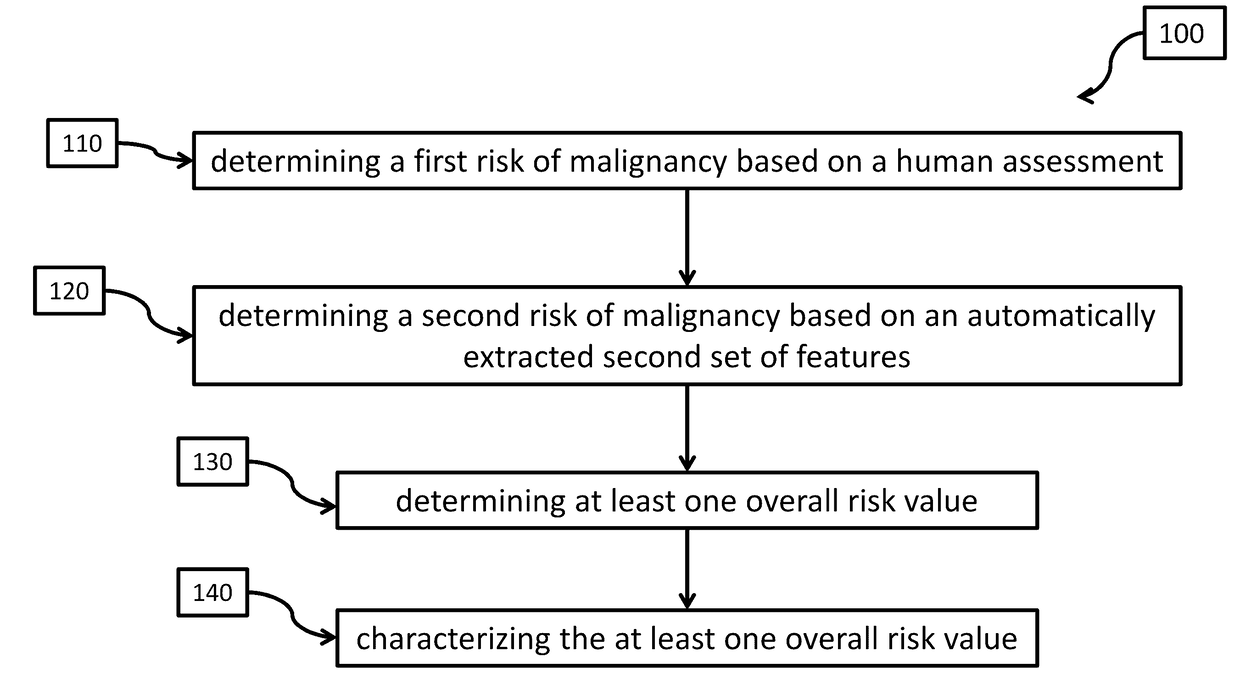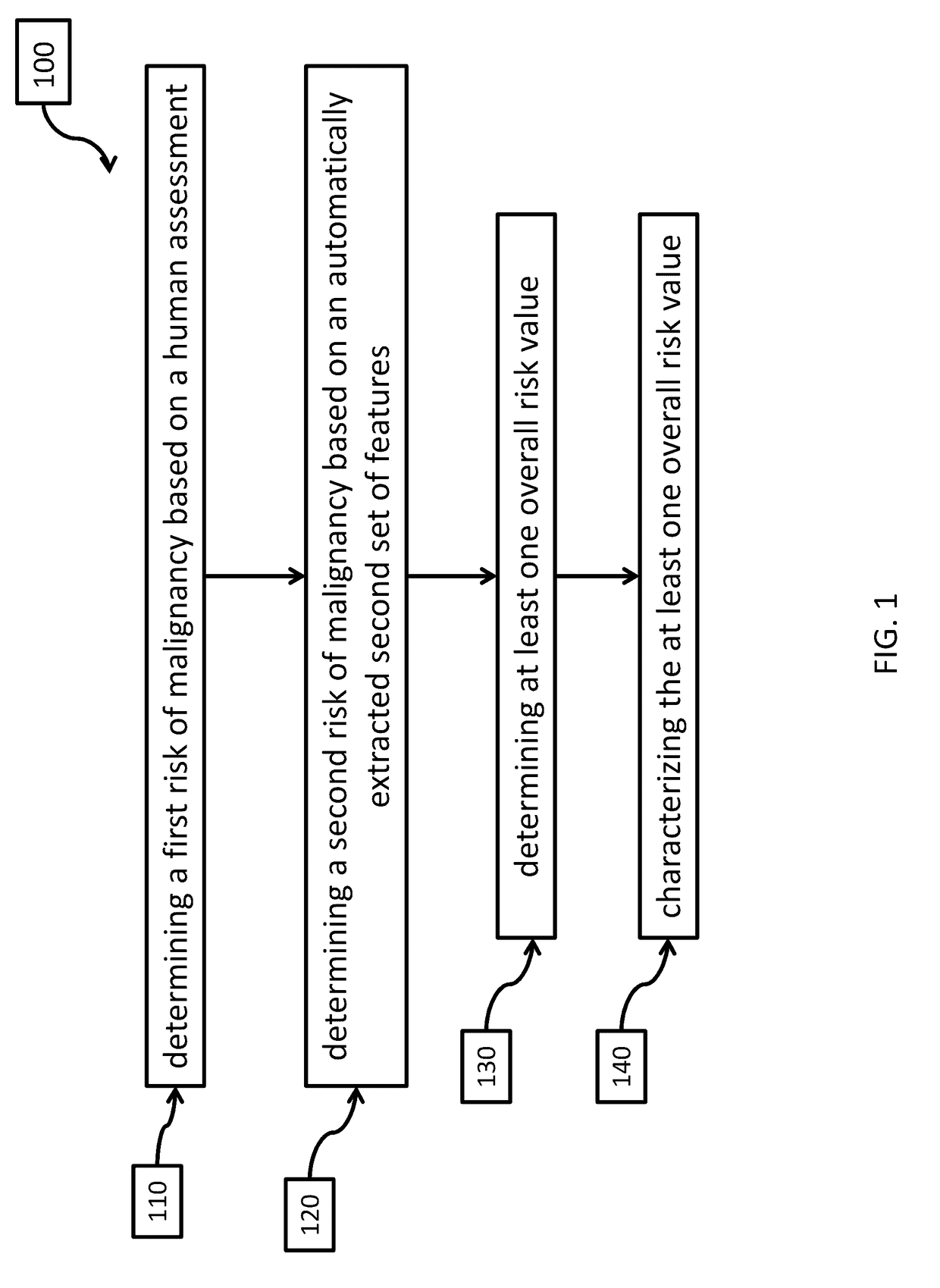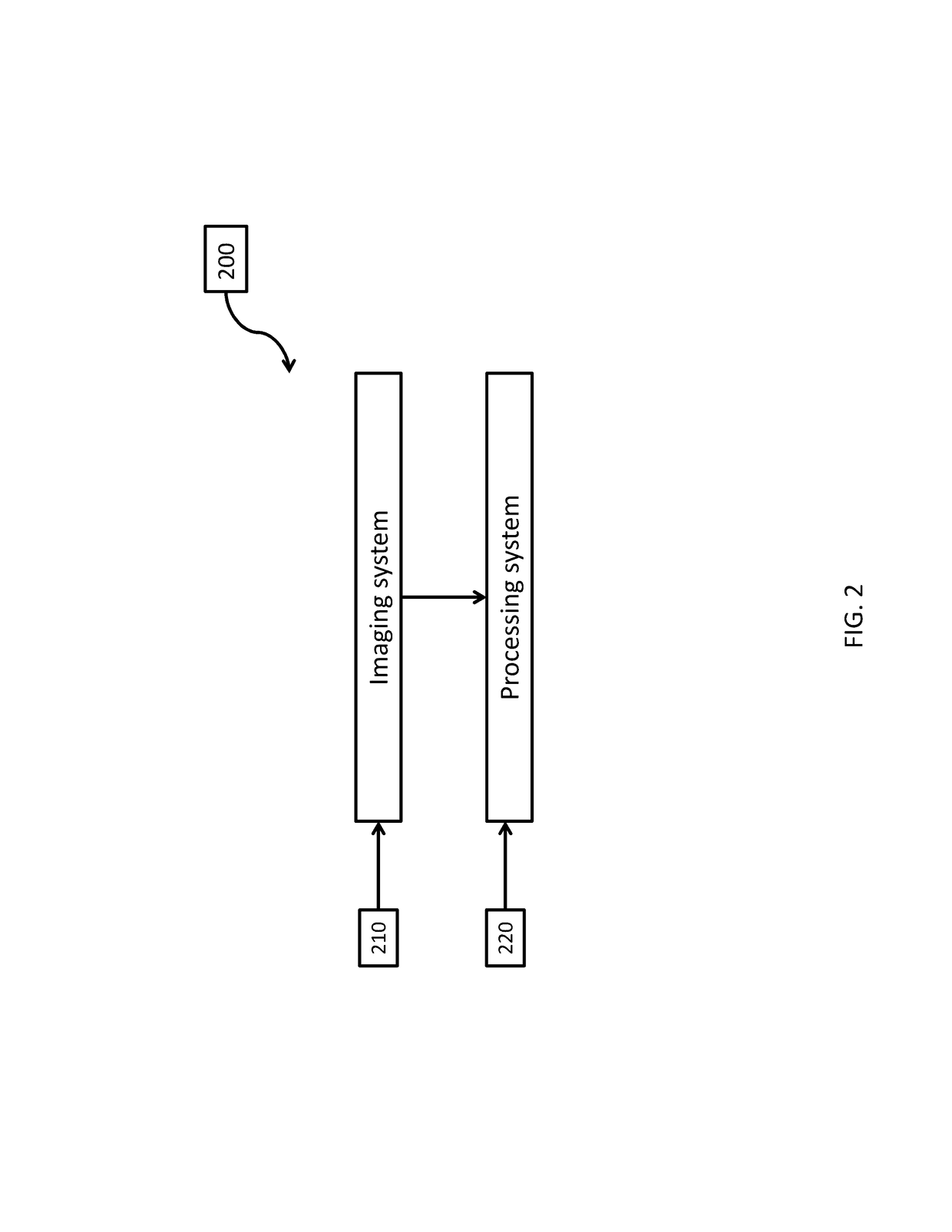Machine implemented methods, systems, and apparatuses for improving diagnostic performance
a technology of diagnostic performance and implemented methods, applied in diagnostic recording/measuring, instruments, ultrasonic/sonic/infrasonic image/data processing, etc., can solve the problems of false negatives having major consequences for patient mortality, low biopsy yield, unnecessary trauma, etc., and achieve the effect of improving diagnostic performan
- Summary
- Abstract
- Description
- Claims
- Application Information
AI Technical Summary
Benefits of technology
Problems solved by technology
Method used
Image
Examples
example 1
[0043]FIG. 12 generally depicts the method employed in this example. Two independent sets of features were extracted and classified from each image in the library of breast ultrasound images, one set being extracted by a radiologist's interpretation of ultrasound BIRADS (BI-RADSus) and one set of features extracted by way of a computer from the images (FIG. 12, step a). The radiologist's interpretations of ultrasound images (BI-RADSus) could be combined with the computer-identified features using adaptive boosting or a consensus method, described below (FIG. 12, step b). This process was implemented to expand the discriminatory region of each feature set by incorporating the strengths of each set of features. Despite combining the regions of strength of each of the two independent feature sets some assessments remained characterized as being a low confidence assessment. These low confident assessments were removed from the dataset for further evaluation by additional imaging (FIG. 1...
example 2
[0076]For illustrative purposes, suppose that there are 200 assessments with 100 benign and 100 malignant and that the distribution of malignant and benign assessments is the same in the sub-sample of assessments characterized as low confidence. Thus, at a 20% drop rate there will be 80 assessments apiece of malignant and benign assessments in the retained subpopulation of 160 high confidence assessments and 20 assessments apiece of malignant and benign assessments in the low confidence subpopulation of 40 assessments (presumed to all be sent for a biopsy). In the high confidence group, if we operate at 80% specificity we obtain a sensitivity (true positive fraction) of 98% from the middle curve of FIG. 7 leading to 2 missed malignant assessments (rounded up from 1.6) out of the total of 80 in this group. This is the regrettable false negative rate at this level of specificity. At an operational point of 80% specificity, 16 of the 80 benign assessments in the high confidence group a...
PUM
 Login to View More
Login to View More Abstract
Description
Claims
Application Information
 Login to View More
Login to View More - R&D
- Intellectual Property
- Life Sciences
- Materials
- Tech Scout
- Unparalleled Data Quality
- Higher Quality Content
- 60% Fewer Hallucinations
Browse by: Latest US Patents, China's latest patents, Technical Efficacy Thesaurus, Application Domain, Technology Topic, Popular Technical Reports.
© 2025 PatSnap. All rights reserved.Legal|Privacy policy|Modern Slavery Act Transparency Statement|Sitemap|About US| Contact US: help@patsnap.com



